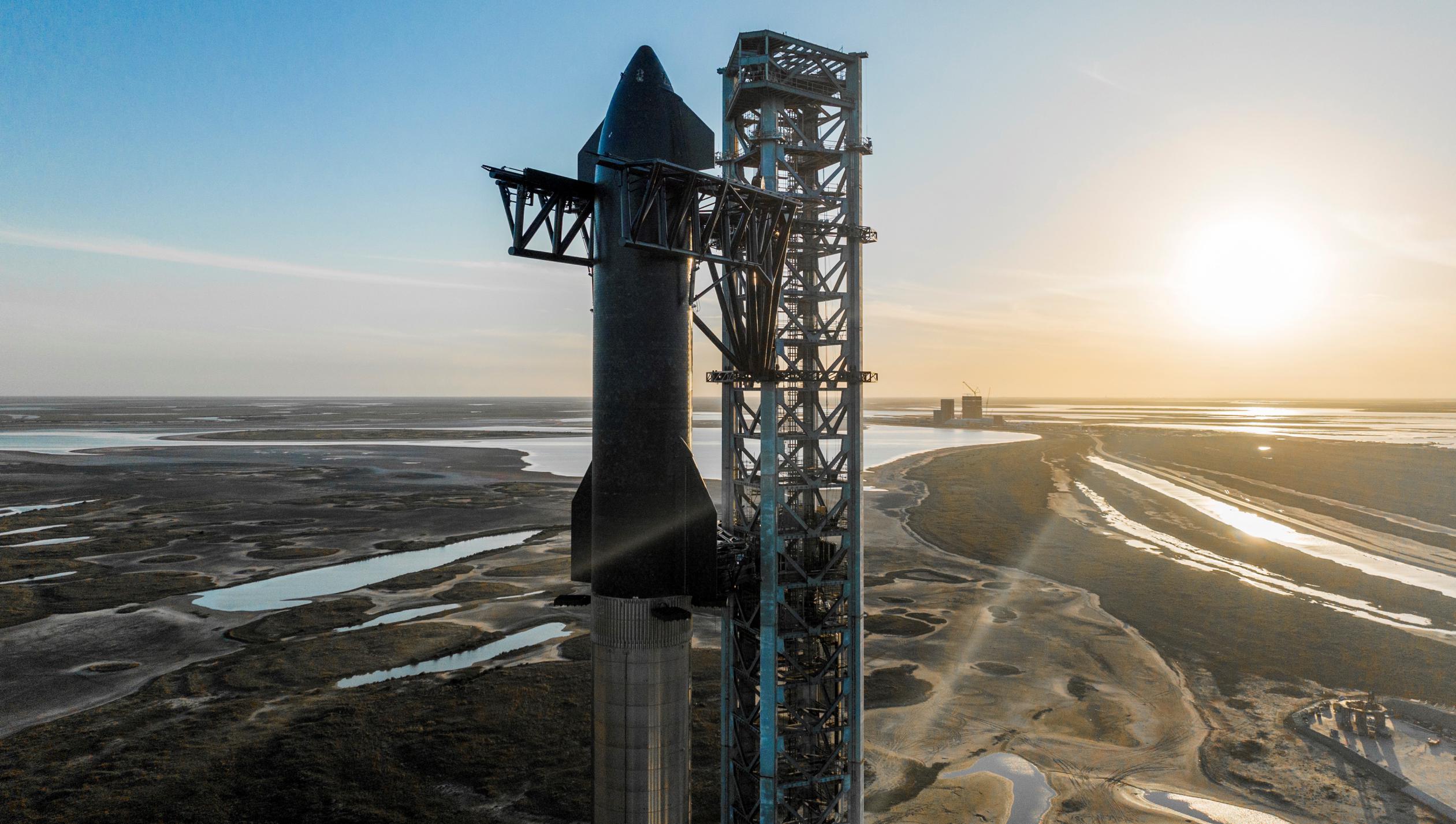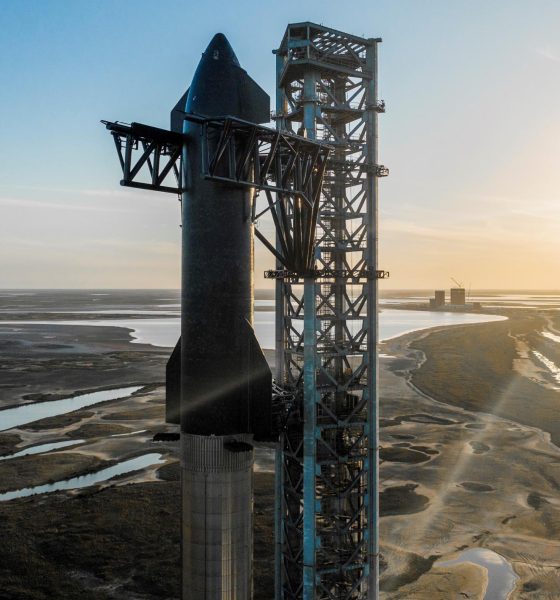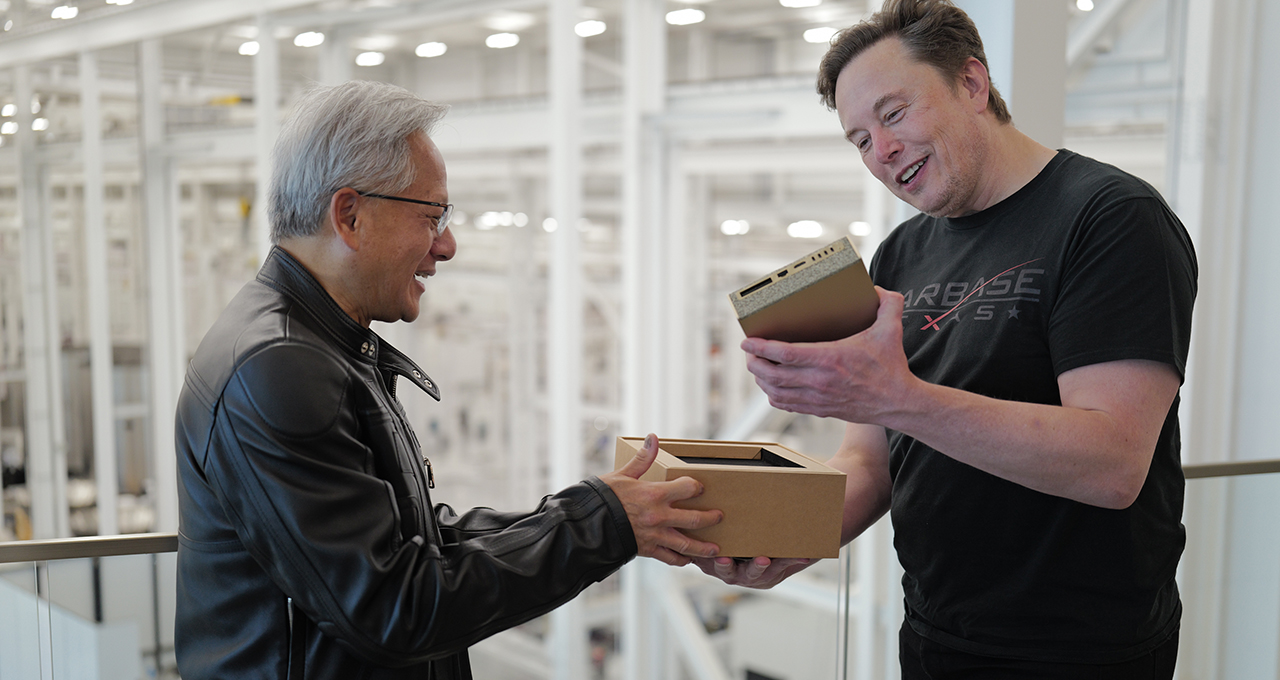

News
SpaceX a big step closer to orbital Starship launches after passing FAA environmental review
SpaceX has secured environmental approval from the FAA and relevant federal, state, and local stakeholders to conduct orbital Starship launches on the South Texas coast.
After a relatively normal 12 months of work and half a dozen poorly communicated delays, the FAA has ultimately issued SpaceX an extremely favorable “Mitigated Finding of No Significant Impact” or Mitigated FONSI for its plans to conduct a very limited number of orbital Starship launches per year out of Boca Chica, Texas. With the receipt of that final programmatic environmental assessment (PEA), SpaceX has arguably hurdled the most difficult regulatory barrier for Texas orbital Starship launches and secured itself a foundation upon which it should be able to attempt to expand the scope of Starbase’s long-term utility.
To secure that favorable result, however, SpaceX ultimately agreed to dozens upon dozens of “mitigations” that will take a significant amount of work to complete and maintain in order to partially alleviate some of the launch site’s environmental impact. It’s also far from the last regulatory hurdle standing between SpaceX and orbital Starship launches.
In many ways, Starbase’s Final PEA is a bit simpler than what SpaceX initially requested in its September 2021 draft. As previously discussed, it was already known that SpaceX had withdrawn initial plans to build its own dedicated natural gas power plant, desalination plant, and natural gas refinery and liquefaction facilities at or near the launch site before the draft was finalized. The Final PEA goes a bit further, simplifying SpaceX’s initial request for two “phases” of annual Starship launch operations and settling on a single “operational phase” that allows up to five suborbital and five orbital Starship launches per year.
However, aside from the already expected removal of onsite methane fuel production and all associated facilities, the rest of the Final PEA appears to be surprisingly close – if not outright identical – to SpaceX’s Starbase Draft PEA. Crucially, SpaceX was not forced to reduce the number of permitted orbital launches, suborbital launches, or ship/booster static fire tests it originally pursued. While a maximum of five orbital launches will severely limit Starbase’s utility outside of early flight testing, it’s still a big improvement over a compromise for 1-4 annual launches.


Perhaps even more notably, the Final PEA also includes permission for up to 500 hours of highway closures for nominal operations and up to 300 hours of closures for emergency anomaly response per year – exactly what SpaceX requested in its Draft PEA. In 2014, SpaceX completed an even more thorough environmental impact statement (EIS) for Falcon rocket launches out of Boca Chica and received approval for no more than 180 hours of annual closures – a restriction that could have made Starbase virtually unusable as a hub for Starship development.
Of the dozens of mitigations SpaceX will have to implement to conduct Starship launches under its new Starbase PEA, a majority appear to be normal and reasonable. Most focus on specific aspects of things already discussed, like protecting turtles (lighting, beach cleanup, education, nest scouting and monitoring, etc.), safeguarding other protected species, respecting impacted areas of historical importance; ensuring that road closures avoid certain holidays and periods to limit Starbase’s impact on local use of public parks and beaches; and other common-sense extensions of existing rules and regulations. In a few cases, SpaceX has even agreed to deploy solar-powered Starlink internet terminals to enable “enhanced satellite monitoring” of wildlife for the US Fish and Wildlife Service and Peregrine Fund.
Others are oddly specific and read a bit more like local and state agencies taking advantage of their leverage to get SpaceX to manage and pay for basic infrastructure maintenance and improvement that any functional government should already be doing. The lengthy list of odd “mitigations” includes the following:
- Quarterly beach and highway cleanups
- Construct at least one highway wildlife crossing
- Construct a wildlife viewing platform along Highway 4
- Complete and maintain traffic control fencing demarcating the boundaries of TPWD land along said public highway
- $5,000 per year to “enhance” the Texas Parks and Wildlife Department’s (TPWD) fishing “Tackle Loaner Program”
- Prepare a history report on any events and activities of the Mexican War and Civil War that took place in all affected areas of historical importance
- Fund the development of five signs explaining the “history and significance” of those areas
- “[Replicate and install] the missing stars and wreaths on the Palmetto Pilings Historical Marker”
Ultimately, the Final PEA SpaceX received is an extremely positive outcome, and there should be little doubt that SpaceX will complete all mitigations requested of it and help improve aspects of Boca Chica, Texas as a result. Up next, SpaceX will need to secure an orbital Starship launch license from the FAA by demonstrating, to the agency’s satisfaction, that it meets “safety, risk, and financial responsibility requirements” in addition to all environmental requirements. The company has already begun that process with the FAA, but it could still take weeks or months after the Final PEA to secure an operator license or experimental permit. Any such license or permit will be conditional upon the completion of all mitigation requirements established by the PEA.

Elon Musk
NVIDIA CEO Jensen Huang commends Tesla’s Elon Musk for early belief
“And when I announced DGX-1, nobody in the world wanted it. I had no purchase orders, not one. Nobody wanted to buy it. Nobody wanted to be part of it, except for Elon.”

NVIDIA CEO Jensen Huang appeared on the Joe Rogan Experience podcast on Wednesday and commended Tesla CEO Elon Musk for his early belief in what is now the most valuable company in the world.
Huang and Musk are widely regarded as two of the greatest tech entrepreneurs of the modern era, with the two working in conjunction as NVIDIA’s chips are present in Tesla vehicles, particularly utilized for self-driving technology and data collection.
Nvidia CEO Jensen Huang regrets not investing more in Elon Musk’s xAI
Both CEOs defied all odds and created companies from virtually nothing. Musk joined Tesla in the early 2000s before the company had even established any plans to build a vehicle. Jensen created NVIDIA in the booth of a Denny’s restaurant, which has been memorialized with a plaque.
On the JRE episode, Rogan asked about Jensen’s relationship with Elon, to which the NVIDIA CEO said that Musk was there when nobody else was:
“I was lucky because I had known Elon Musk, and I helped him build the first computer for Model 3, the Model S, and when he wanted to start working on an autonomous vehicle. I helped him build the computer that went into the Model S AV system, his full self-driving system. We were basically the FSD computer version 1, and so we were already working together.
And when I announced DGX-1, nobody in the world wanted it. I had no purchase orders, not one. Nobody wanted to buy it. Nobody wanted to be part of it, except for Elon.
He goes ‘You know what, I have a company that could really use this.’ I said, Wow, my first customer. And he goes, it’s an AI company, and it’s a nonprofit and and we could really use one of these supercomputers. I boxed one up, I drove it up to San Francisco, and I delivered it to the Elon in 2016.”
The first DGX-1 AI supercomputer was delivered personally to Musk when he was with OpenAI, which provided crucial early compute power for AI research, accelerating breakthroughs in machine learning that underpin modern tools like ChatGPT.
Tesla’s Nvidia purchases could reach $4 billion this year: Musk
The long-term alliance between NVIDIA and Tesla has driven over $2 trillion in the company’s market value since 2016.
Elon Musk
GM CEO Mary Barra says she told Biden to give Tesla and Musk EV credit
“He was crediting me, and I said, ‘Actually, I think a lot of that credit goes to Elon and Tesla…You know me, Andrew. I don’t want to take credit for things.”

General Motors CEO Mary Barra said in a new interview on Wednesday that she told President Joe Biden to credit Tesla and its CEO, Elon Musk, for the widespread electric vehicle transition.
She said she told Biden this after the former President credited her and GM for leading EV efforts in the United States.
During an interview at the New York Times Dealbook Summit with Andrew Ross Sorkin, Barra said she told Biden that crediting her was essentially a mistake, and that Musk and Tesla should have been explicitly mentioned (via Business Insider):
“He was crediting me, and I said, ‘Actually, I think a lot of that credit goes to Elon and Tesla…You know me, Andrew. I don’t want to take credit for things.”
GM CEO Mary Barra said to Andrew Sorkin at the New York Times Dealbook Summit that she pulled President Biden aside and said Tesla CEO @elonmusk deserved the credit for EVs:
“He was crediting me, and I said, ‘Actually, I think a lot of that credit goes to Elon and Tesla,'” Barra… pic.twitter.com/OHBTG1QfbJ
— TESLARATI (@Teslarati) December 3, 2025
Back in 2021, President Biden visited GM’s “Factory Zero” plant in Detroit, which was the centerpiece of the company’s massive transition to EVs. The former President went on to discuss the EV industry, and claimed that GM and Barra were the true leaders who caused the change:
“In the auto industry, Detroit is leading the world in electric vehicles. You know how critical it is? Mary, I remember talking to you way back in January about the need for America to lead in electric vehicles. I can remember your dramatic announcement that by 2035, GM would be 100% electric. You changed the whole story, Mary. You did, Mary. You electrified the entire automotive industry. I’m serious. You led, and it matters.”
People were baffled by the President’s decision to highlight GM and Barra, and not Tesla and Musk, who truly started the transition to EVs. GM, Ford, and many other companies only followed in the footsteps of Tesla after it started to take market share from them.
Elon Musk and Tesla try to save legacy automakers from Déjà vu
Musk would eventually go on to talk about Biden’s words later on:
“They have so much power over the White House that they can exclude Tesla from an EV Summit. And, in case the first thing, in case that wasn’t enough, then you have President Biden with Mary Barra at a subsequent event, congratulating Mary for having led the EV revolution.”
In Q4 2021, which was shortly after Biden’s comments, Tesla delivered 300,000 EVs. GM delivered just 26.
News
Tesla Full Self-Driving shows confident navigation in heavy snow
So far, from what we’ve seen, snow has not been a huge issue for the most recent Full Self-Driving release. It seems to be acting confidently and handling even snow-covered roads with relative ease.

Tesla Full Self-Driving is getting its first taste of Winter weather for late 2025, as snow is starting to fall all across the United States.
The suite has been vastly improved after Tesla released v14 to many owners with capable hardware, and driving performance, along with overall behavior, has really been something to admire. This is by far the best version of FSD Tesla has ever released, and although there are a handful of regressions with each subsequent release, they are usually cleared up within a week or two.
Tesla is releasing a modified version of FSD v14 for Hardware 3 owners: here’s when
However, adverse weather conditions are something that Tesla will have to confront, as heavy rain, snow, and other interesting situations are bound to occur. In order for the vehicles to be fully autonomous, they will have to go through these scenarios safely and accurately.
One big issue I’ve had, especially in heavy rain, is that the camera vision might be obstructed, which will display messages that certain features’ performance might be degraded.
So far, from what we’ve seen, snow has not been a huge issue for the most recent Full Self-Driving release. It seems to be acting confidently and handling even snow-covered roads with relative ease:
FSD 14.1.4 snow storm Ontario Canada pic.twitter.com/jwK1dLYT0w
— Everything AI (@mrteslaspace) November 17, 2025
I found the steepest, unplowed hill in my area and tested the following:
• FSD 14.2.1 on summer tires
• FSD 14.2.1 on winter tires
• Manual drivingBut I think the most impressive part was how FSD went DOWN the hill. FSD in the snow is sublime $TSLA pic.twitter.com/YMcN7Br3PU
— Dillon Loomis (@DillonLoomis) December 2, 2025
Well.. I couldn’t let the boys have all the fun!
Threw the GoPro up and decided to FSD v14.2.1 in the snow. Roads were not compacted like the other day, a little slippery, but overall doable at lower speeds. Enjoy the video and holiday music 🎶
Liked:
Took turns super slow… pic.twitter.com/rIAIeh3Zu3— 🦋Diana🦋 (@99_Colorado) December 3, 2025
Moving into the winter months, it will be very interesting to see how FSD handles even more concerning conditions, especially with black ice, freezing rain and snow mix, and other things that happen during colder conditions.
We are excited to test it ourselves, but I am waiting for heavy snowfall to make it to Pennsylvania so I can truly push it to the limit.








